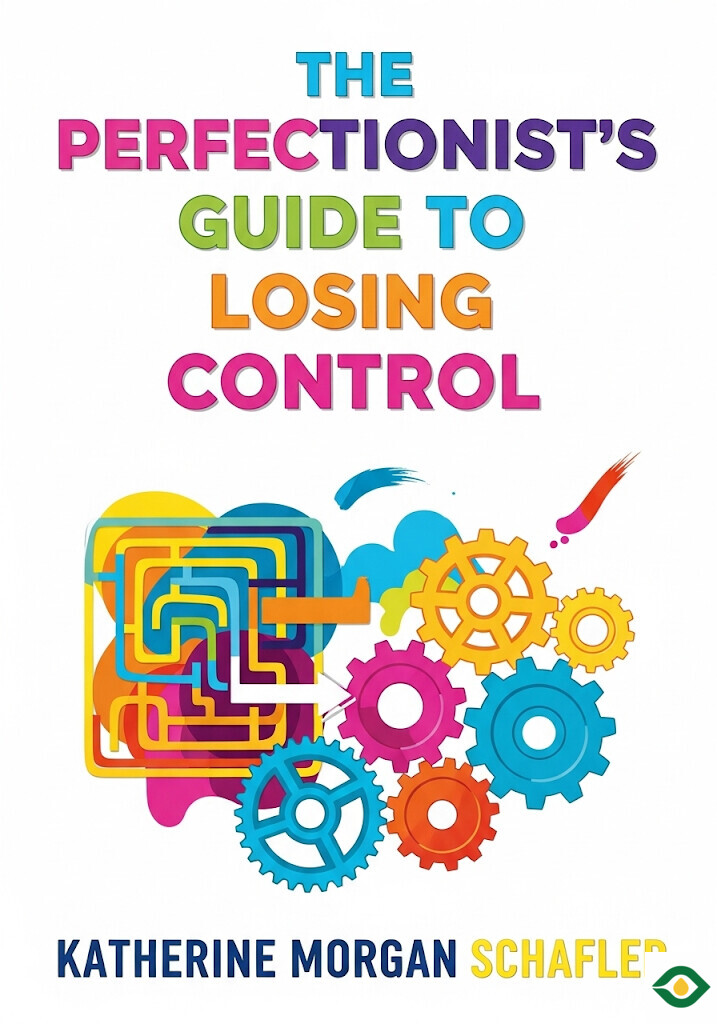Description
Perfectionism is often seen as a weakness, a trait that needs fixing. People are told to let go of high standards, to stop caring so much, and to loosen up. But this way of thinking misses the truth. Perfectionism is not a disease. It is energy. It is drive. When used with balance, it can become one of the most powerful forces in your life.
The author Katherine Morgan Schafler shows that perfectionism is not about constant misery or endless frustration. It is about noticing the gap between reality and the ideal, and wanting to close that gap. That desire itself is not harmful. What makes it harmful is how you treat it. Perfectionism can either push you forward or trap you in fear. The difference lies in how you adapt.
There are two broad paths. Adaptive perfectionists use their standards to guide them without being crushed by them. They enjoy the process, accept mistakes, and learn from them. They grow stronger because their high standards fuel their progress. Maladaptive perfectionists, however, let fear control them. They worry endlessly about failure. They avoid risks. They punish themselves for every small flaw. The same drive that could inspire them instead becomes a weight that drags them down.
To better understand perfectionism, Schafler identifies five main types. These are not rigid boxes but useful ways to see patterns. Many people fit into more than one, or shift between them depending on the situation.
The first type is the classic perfectionist. This is the person who is neat, orderly, and efficient. They are on time, well prepared, and reliable. At their best, they can manage huge projects with calm precision. At their worst, they leave no space for play, creativity, or warmth, which can leave them lonely and misunderstood.
The second type is the Parisian perfectionist. This person is focused on relationships. They want their connections with others to be deep and flawless. They seek approval and belonging, but often hide how much effort they put into it. When balanced, they build strong networks and supportive communities. When unbalanced, they exhaust themselves trying to please everyone and lose sight of their own needs.
The third type is the procrastinator perfectionist. They dream endlessly but hesitate to act. For them, ideas are perfect in the mind, but bringing them into the real world risks disappointment. So they delay, sometimes forever. When healthy, they learn to accept change and can become master planners with open minds. When stuck, they drown in indecision and frustration.
The fourth type is the messy perfectionist. This person loves beginnings. They throw themselves into new ideas with passion. But when the excitement fades, they abandon projects and leave trails of unfinished work. At their best, they are creative visionaries who bring energy to every team. At their worst, they lack focus and fail to deliver on promises.
The fifth type is the intense perfectionist. They chase the outcome with fierce determination. They care less about the journey and more about the result. When healthy, they inspire others, lead with courage, and push limits. When unhealthy, they become harsh, demanding, and impossible to satisfy.
Knowing which type resonates with you is not the final step. It is only the beginning. The real key is learning to treat yourself with compassion. Most perfectionists are harshest on themselves. They punish every mistake, replay every failure in their minds, and talk to themselves in ways they would never talk to a friend. This self-punishment is destructive. It drains energy and joy, and it leads to numbing behaviors like overeating, overworking, or blaming others.
Self-compassion is the antidote. It means remembering that mistakes are part of being human. It means replacing the harsh inner voice with a kinder one. It means focusing on the process, not just the final goal. For perfectionists, this is challenging, because the drive for the perfect outcome is so strong. But shifting even a little can make a big difference.
One way to practice self-compassion is to learn from failures rather than fearing them. Adaptive perfectionists “fail forward.” They use each setback as a lesson. They understand that growth often happens in the moments of imperfection. Another way is to remind yourself that feelings are not facts. Just because you feel like a failure does not mean you are one.
When self-compassion feels too hard, connection with others can help. Talking to supportive people, asking for practical help, or even joining communities—whether in person or online—can provide relief and perspective. Connection does not always mean sharing your deepest emotions. Sometimes it is simply accepting a meal from a friend, joining a group walk, or showing up to a class. These small acts create belonging, and belonging eases the sharp edge of perfectionism.
Relaxation is also vital, though perfectionists often resist it. Rest can feel like wasted time. But energy is not infinite. Without restoration, perfectionism becomes brittle and harmful. Active relaxation, like cooking, dancing, or writing, can feel more natural to perfectionists who dislike “doing nothing.” Over time, learning to enjoy gentler forms of rest—like reading something light, taking a slow walk, or savoring a meal—can also bring balance.
Ultimately, perfectionism is not something to cure. It is a powerful current that flows through you. If you fight it, it will overwhelm you. If you ignore it, it will twist into anxiety and shame. But if you learn to ride it, if you adapt, it can take you further than you ever imagined.
The path will not be smooth. There will be days when you slip back into self-criticism or exhaustion. That is natural. What matters is returning to compassion, to connection, and to balance. Over time, perfectionism can become less of a burden and more of a gift. It can stop being the voice that scolds you and start being the force that fuels you.
Perfectionism is not the enemy. It is a part of you. With care, it can be turned into your greatest strength.





